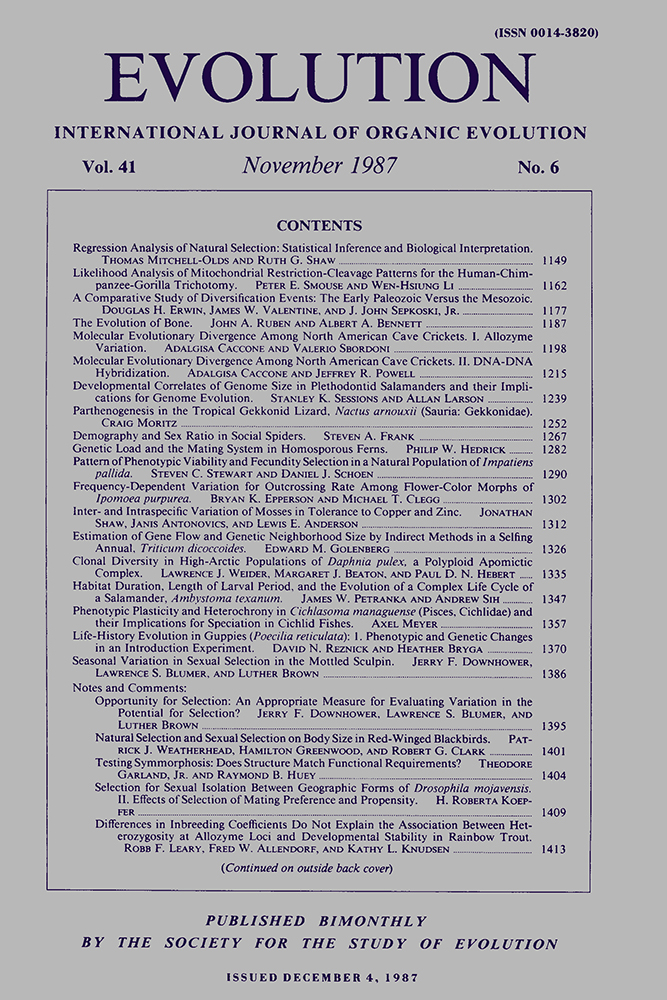CLONAL DIVERSITY IN HIGH-ARCTIC POPULATIONS OF DAPHNIA PULEX, A POLYPLOID APOMICTIC COMPLEX
Abstract
Based largely on analogy with latitudinal trends in species diversity, it has been proposed that levels of genotypic (clonal) diversity in parthenogenetic populations from high latitudes should be lower than those in populations from the temperate zone or the tropics.
Prior studies have shown that low-arctic populations of obligately asexual Daphnia pulex are less clonally diverse than temperate-zone populations. To test for the existence of a latitudinal trend, an allozymic survey of obligately parthenogenetic populations of D. pulex was conducted at a site in the Canadian high-arctic. The study revealed the presence of 75 clones in 179 tundra ponds that were surveyed. On average, 4.5 clones coexisted in single ponds with a range of 1–14 clones. These diversity values are as great (or greater) than those observed in more southerly populations and conflict with the notion of reduced levels of genetic variation in arctic populations. Mechanisms that may influence genetic (clonal) diversity in apomictic complexes are discussed.




